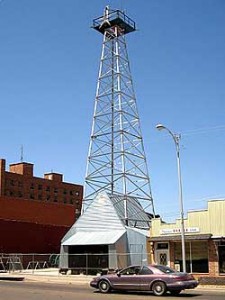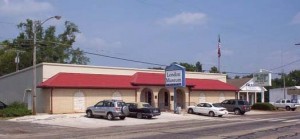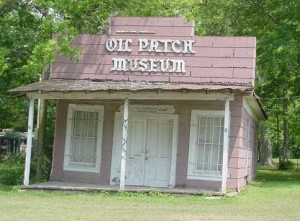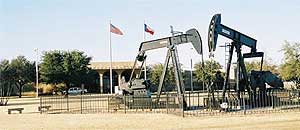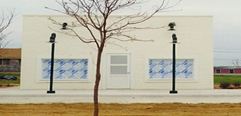Texas oil and natural gas history museums exhibit America’s petroleum exploration heritage — and educate visitors about the modern business of meeting America’s energy needs.
The Texas museums below exhibit technological and environmental advancements, discoveries, products, and local pioneers who created the modern energy industry. The American Oil & Gas Historical Society (AOGHS), which, like these museums, depends on donations, maintains updated links to Texas museums and the petroleum museums in other states.
Chartered in 1978, the Alvin Museum Society in Alvin, Texas, began when the Gulf Coast community’s Bicentennial Commission authorized creation of the Alvin Historical Museum to collect and record local history.
Housed in a remodeled former U.S. Post Office building, the museum includes exhibits that explore the development of Alvin from its beginnings as an 1879 Santa Fe railroad loading site. In July 2025, the Museum added a two-ton, refurbished oilfield pump jack (Model 9A9) to its collection.
“Oil had been an integral portion of the area’s history since the 1930s, and we are really proud to have an actual pump jack at the Museum,” noted Board Member Tom Stansel.
Bertha Terry Cornwell Museum of Sour Lake History
This museum at Sour Lake in Hardin County preserves the history of a region first settled in 1835 when Stephen Jackson was granted the land by the Mexican State of Coahuila. The tow’s name comes from sulfurous spring water once abundant in the area. Mineral wells attracted visitors to spas in the early years.
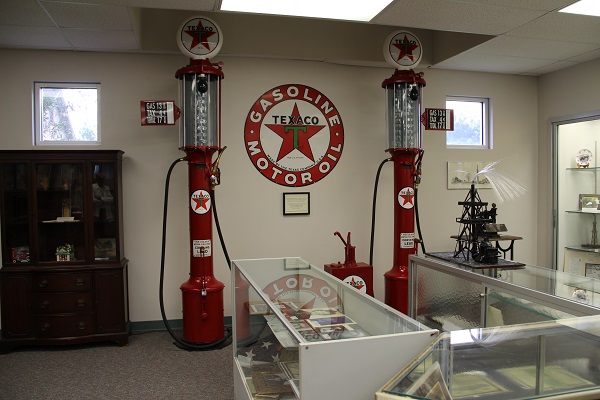
Bertha Terry Cornwell Museum exhibits explain how Texaco got its start thanks to Sour Lake oil discoveries.
Major oil discoveries at Sour Lake, near the world-famous 1901 gusher at Spindletop, transformed the Texas Company (learn more in Sour Lake produces Texaco). Established in 2001, the community museum was created thanks to a bequest from Bertha Cornwell, longtime Sour Lake librarian and historian. The museum is administered by the City of Sour Lake and staffed by volunteers behind the Alma Carpenter Library at 300 South Ann Street.
Bob Bullock Texas State History Museum
The Bob Bullock Texas State History Museum in Austin has three floors of state-of-the-art exhibits and 17 different media and interactive experiences that trace Texas history from before European exploration.

The Bob Bullock Texas State History Museum in Austin includes the “Oil Tank Theater” narrated by Walter Cronkite. Photo by Bruce Wells.
A third-floor exhibit, “Creating Opportunity.” looks at the perseverance and ingenuity of Texans in everything from oil exploration and drilling, to ranching. The “Oil Tank Theater” features narration by Texan Walter Cronkite of the impact of oil on Texas.
Carson Country Square House Museum
The “Square House” in Panhandle, Texas, was built in the 1880s with lumber from Dodge City, Kansas. It’s one of 21 buildings, galleries, and large outdoor artifacts that make up the Carson County Square House Museum. Exhibits tell the story of the Texas Panhandle and its people, from mammoth hunters 12,000 years ago, through the Indian Wars, cattle ranches, the coming of the railroad in the 19th century, to the High Plains oil boom of the 1920s.
The mission of Columbia Historical Museum in West Columbia “is to bring a better understanding and appreciation of the rich history of West and East Columbia to Brazoria County.” Columbia, now known as West Columbia, was capital of the Republic of Texas from September 1836 to April 1837. The museum opened in 1990, “in a beautiful stone and marble building built in 1950 and used as a bank.”

The Columbia Historical Museum, 247 E. Brazos Avenue, opened in 1990 in a former bank building.
Brazoria County is home to a remarkable number of oilfield discoveries, including the Damon Mound field of 1915, the Manvel field of 1931, and the Hastings and Old Ocean fields of 1934. The giant West Columbia field, first revealed in 1917 by former Texas Gov. James Hogg, produced 10.6 million barrels of oil in 1920.
The Columbia Historical Museum, operated by dedicated volunteers and one paid staff member, today hosts tour groups and offers a customized itinerary to include other historical sites southwest of Houston. he museum is open Thursdays through Saturdays, 10 a.m. to 2 p.m., at 247 E. Brazos Avenue.
The 1901 Missouri Pacific Railway Depot in Henderson was an important link, especially when the giant East Texas oilfield was discovered in 1930. Today it is the Depot Museum, which includes Rusk County oil exhibits, education curricula, and instruction for folk arts that have been preserved specific to the region’s diverse history.
Henderson was designated the county seat of Rusk County when it was formed in 1843. The business district was laid out around a courthouse square. Henderson grew into an important commercial, cultural, and governmental center for the area.
East Texas Historical Association
The East Texas Historical Association began when W.F. Garner, chairman of the Department of History at Stephen F. Austin State Teachers College (now university), invited Sam Houston State Teachers College and East Texas State Teachers College to form an organization to promote the study of East Texas history. The association publishes the East Texas Historical Journal biannually. The association is located in Nacadoches see First Lone Star Discovery).
The easy-going rural life of East Texas changed drastically with the discovery of oil in 1930 and 1931 – years of hardship, scorn, luck and wealth which brought people, ideas, institutions and national attention to East Texas.
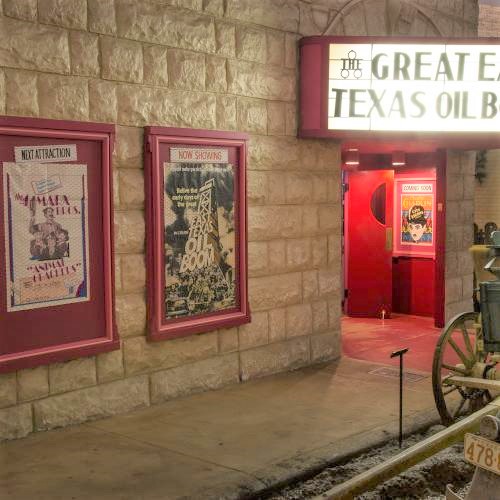
Digitized movies play inside the East Texas Oil Museum’s refurnished theater.
The museum at Kilgore College, Kilgore, houses the authentic recreation of oil discovery and production in the early 1930s in the largest oilfield inside U.S. boundaries: “Here are the people, their towns, their personal habits, their tools and their pastimes, all colorfully depicted in dioramas, movies, sound presentations and actual antiques donated by East Texas citizens.”
Mr. F.T. Felty, an independent producer, and his sons maintain a unique outdoor museum and host school tours as part of the Burkburnett “Tales and Trails” program. Local historians and the city host a website of the area’s fascinating boom town history, including its starring role in the 1940 movie “Boom Town,” starring Clark Gable, Spencer Tracy and Claudette Colbert. The Felty museum exhibits early oil field equipment from height of the boom and includes spudders used for drilling and cleaning out wells, a steel beam pumping unit, and a band-wheel power source. The museum is on Gresham Road in Burkburnett.
Fort Worth Museum of Science and History
Housed in the Fort Worth Museum of Science and History’s XTO Energy Gallery, the “Energy Blast” exhibit hall is geared for guests age 11 and older. They enter through a multi-sensory prehistoric undersea environment similar to Fort Worth 300 million years ago into the 4-D theater where they embark on “Journey to the Center of the Barnett Shale,” a six-minute experience that tells the story of how natural gas formed within shale deposits of North Texas.
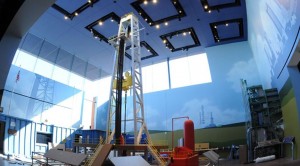
A 30-foot model of a drilling rig-like apparatus is located in the exploration and production section of the Fort Worth Museum of Science and History’s XTO Energy Gallery.
The museum’s history began in 1939 when the local council of Administrative Women in Education began a study of children’s museums with the idea of starting one in Fort Worth. The museum opened in early 1945 in two rooms in De Zavala Elementary School. In 1955, the Charlie Mary Noble Planetarium, the first public planetarium in the region, opened.
With plans to close in 2024, the museum in Joinerville will be moving its artifacts and exhibits the East Texas Oil Museum in Kilgore. Both museums — at the gateway to the historic East Texas oilfield discovered by Marion “Dad” Joiner in 1930 — have depicted 1930s life in the largest oilfield in the lower-48 states.
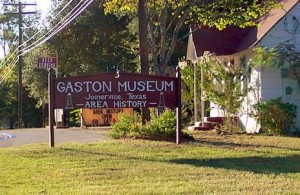
Off the main roads, the Gaston Museum in East Texas preserves the life of working families in the oil patch. Photo by Bruce Wells.
The museum has been housed in a circa 1940 snack shop beside a former Dixie service station in Gaston. With the state’s only known surviving “Tent House,” museum visitors have seen how people lived during on of the greatest U.S. oil booms.
Harris County Historical Commission
The Harris County Historical Commission (HCCC) is dedicated to recognizing historic people, places, and events in Harris County, Texas. The commission’s mission is to “provide a unified and effective voice to preserve, protect, and promote Harris County history and historical locations, and initiate and conduct programs initiated by HCCC.” Preservation programs include Texas Historic Landmark designations in the county, maintenance of an inventory of all historically relevant markers, monuments, and historic Texas cemetery programs, and initiatives to “create countywide awareness and appreciation of historic preservation, its benefits and uses.”
Heritage Museum of Montgomery County
The Heritage Museum of Montgomery County details the volatile history of Conroe, Texas, including two major fires before its fortunes changed in 1931 when the discovery of oil lifted the town from the Great Depression. One of the city’s most impressive historic structures is the 1934 Crighton Theater, named after former Mayor Harry M. Crighton, who commissioned an architect to design a building similar to Houston’s Majestic Theater. A Joe Roughneck Statue at city hall commemorates George William Strake, who became an oil millionaire thanks to the Conroe oilfield.
Houston Museum of Natural Science, Wiess Energy Hall
The Wiess Energy Hall at the Houston Museum of Natural Science explores the application of scientific concepts and advanced technology in the oil and gas industry. Explore the entire process of energy development, from how oil and natural gas are formed to the ways in which various types of energy are used.
The Wiess Energy Hall Online explores the application of scientific concepts and advanced technology in the oil and gas industry. Explore all the processes of energy development, from how oil and natural gas are formed to the ways in which various types of energy are used. This online exhibit incorporates interactive learning methods that are both educational and fun.”
The Humble Museum, 219 Main Street, “collects and displays artifacts depicting local history and heritage, highlighting oil, cattle, lumber, churches and everyday life in small town Humble and the surrounding area.”
The Museum was organized as a Bicentennial Project, and was dedicated on July 1, 1976. The original building was a replica of a one room schoolhouse. Special Displays are shown at the Main Street Museum at various times throughout the year, including a Vintage Camera Display.
A DVD was created from vintage film footage: “In the 1930s, amateur filmmaker H. K. Pursley owned Humble Pharmacy, which was located on Main Street where the Masonic Lodge currently stands. Pursley was believed to be the first person in town to own a movie camera. He put his camera to good use filming everyday life in the charming, oil-boom town of Humble.”
Hutchinson County Historical Museum
In 1926, oil was discovered in Hutchinson County and “Ace Borger” laid out the town, which grew to a city of 15,000 in 90 days. The Hutchinson County Historical Museum exhibits the area’s history from the earliest beginnings to the present day.
The North Texas museum’s mission is to collect, preserve and interpret the county’s heritage — with emphasis on the oilfield and boomtown stories of the 1920-1930 era. Borger is 41 miles northeast of Amarillo. Oil Boom Heritage Month is celebrated every March with Borger’s Birthday celebration on March 8. Special exhibits, events and school tours occur throughout the month.
In 1922, Edgar B. Davis brought in the Rios #1, which proved to be a part of one of the most significant fields ever discovered in the Southwest. Almost overnight, Luling was transformed from a railroad town of 500 to an oil town of 5,000.
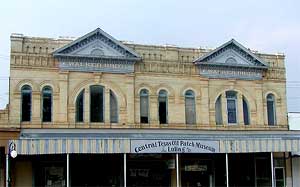
A psychic is credited for a major discovery of an oilfield 12 miles long and two miles wide.
Exhibits in Luling’s restored 1885 mercantile store describe the historic 1922 discovery — and how it changed the community for the better.
Luling is also known for its decorated pumping units, outstanding barbeque restaurants, and an annual Watermelon Thump Festival – and Seed-Spitting Contest. The Guinness Book of World Records documents the contest’s still unbeaten distance of 68 feet, 9 and 1/8 inches set in 1989.
The Million Barrel Museum in Monahans, Texas, is a 14.5-acre site dominated by a large elliptical oil storage tank built in 1928 by Shell Oil Company. The concrete 522 feet by 426 feet experimental tank was designed to hold more than a million barrels of oil — the highly productive region lacked oil pipelines at the time.
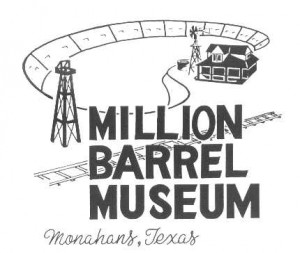
In the heart of the Permian Basin, the Texas community of Monahans boasts of an oil museum like no other.
The 1929 stock market crash and technical problems ended the storage experiment. Abandoned for many years (and briefly turned into a water park in the 1950s), today the tank is the setting for barbeques, dances, cowboy poetry readings and fajita cook-offs. A segment of the tank wall helped create the 400 seat Meadows Amphitheater. Other exhibits include the original Monahans Jail, a section of railroad track with a vintage caboose, an eclipse windmill, and displays of antique farm equipment. Visit it at 400 Museum Boulevard, in Monahans.
The Museum of the Plains, Perryton, Texas, today includes an oil and natural gas exhibit, thanks to a gift from independent oilman Jack Allen and his wife Rita. The exhibit, designed to educate both children and adults, explains the stages of petroleum, from formation to the gas pump — and describes methods used for determining where to drill. Equipment, films and local information illustrate the economic importance of the energy industry.
New London School Explosion Museum
On March 18, 1937, natural gas – odorless in those days – caused an explosion and destroyed the London School of New London, a community in Rusk County previously known as London. More than 300 students and teachers died. Many were the children of roughnecks working in the booming East Texas oilfield.
The museum began in 1980 when students asked survivor Mollie Ward what she remembered. “That’s when I really realized history was beginning to be forgotten.”
The cause of the tragic explosion was found to be a wood-shop saw that sparked unscented natural gas that had pooled beneath the school. New laws would soon require adding an odor to natural gas.
The Museum of North Texas History in downtown Wichita Falls features a wide variety of local history exhibits, including everything from airplanes, autos, and military memorabilia, to old-fashioned toys and cowboy hats. The centerpiece of the museum’s medical collection is an iron lung originally from Archer County. Exhibits about the petroleum industry — a major part of life in North Texas since a 1911 discovery at Electra — include rare photos from the boom days, drill bits, and other equipment (exhibits were under renovation in March 2021).
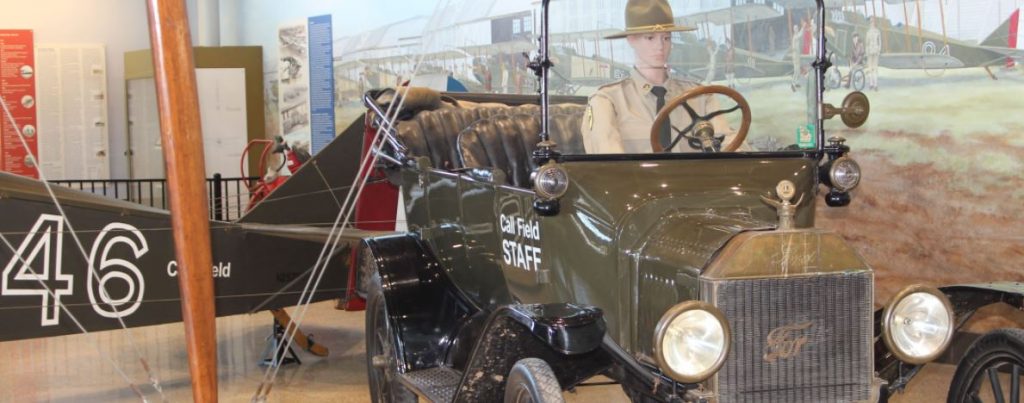
The North Texas History Museum includes a “Jenny to Jet” exhibit at the Wichita Falls Regional Airport. The downtown museum’s Bill English Military Collection has many artifacts “from people with a direct connection to North Texas.”
The Bill English Military Collection began thanks to Lloyd “Bill” English, a longtime Wichita Falls resident and was a Marine aviator in WW II, flying a P-51 Mustang. “What makes the Bill English Military Collection particularly special is that the vast majority of items have come from people with a direct connection to North Texas,” the museum notes. “The Heritage Hall is home to an amazing collection of western hats known as “Nat’s Hats.” Clay County native, Nat Fleming, has worn many hats in his life, including that of the owner of a western wear store called The Cow Lot.”
Ocean Star Offshore Drilling Rig Museum
The Ocean Star Offshore Drilling Rig Museum is located on Galveston Island, Texas, less than an hour from downtown Houston. It is under the auspices of the Houston-based Energy Education Foundation, Houston. Based in Houston, OEC’s education outreach programs “promote awareness and understanding of offshore energy among students and educators. The Hall of Fame recognizes those persons and technologies that took the industry to sea.
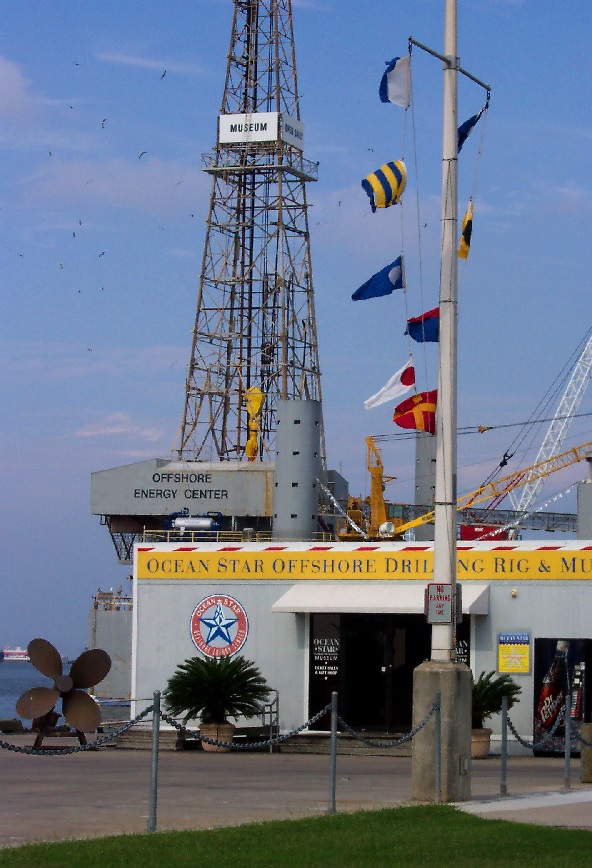
The popular Galveston, Texas, oil museum chronicles the heritage and technological accomplishments of the offshore industry. Photo by Bruce Wells.
The Ocean Star Offshore Drilling Rig Museum and Education Center is docked at Pier 19 in Galveston, less than an hour from downtown Houston, which makes it a wonderful showcase in a perfect location for an ‘offshore’ experience.” Educational tours of the offshore rig museum are available to students aged 7-18, organized through a school, home school, scouts, or similar program. Museum staff guides the groups.
The OEC mission is to “create awareness of the vast energy resources beneath the world’s oceans and the complex industry that delivers these resources in a safe and environmentally responsible way.”
The museum is in Batson, on State Highway 105 and Farm Road 770 in southwestern Hardin County — once was the heart of an oil boom.
A October 1903 a discovery would create a city of several thousand. By the end of 1903, Batson oilfield production averaged 4,518 barrels of oil per day. The peak yearly production was reached in 1904 when almost 11 million barrels of oil were recovered. The local population declined to 600 by 1927 as oil production decreased. Another oilfield, New Batson, was discovered in March 1935.
The discovery of the Batson oilfield — between Spindletop (1901) and Humble (1905) — established the first Gulf Coast oilfields. Today’s population is about 140.
Panhandle-Plains Historical Museum
When the Panhandle-Plains Historical Museum opened its doors in 1933, it was a 12,500 square foot building. Since that time the museum has become the largest history museum in Texas with more than 285,000 square feet. The Don D. Harrington Petroleum Wing tells the story of the oil boom years in the Texas Panhandle during the 1920s and 1930s, and the men who made it happen.
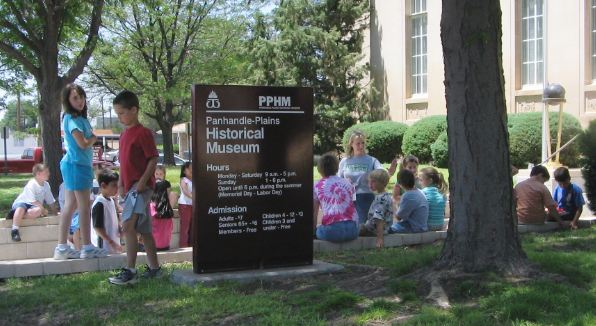
Two floors of exhibits at the Panhandle-Plains Historical Museum in Canyon, Texas, help young people understand the history of the North Texas oil and natural gas industry. Photo by Bruce Wells.
Two floors of exhibits help visitors understand the oil and natural gas business as it was during the early days of discovery and development. Construction of Pioneer Hall began in 1932. The building bears a state antiquities landmark designation for its unique Art Deco architectural style. After continued growth, West Texas State University donated a library on land adjacent to the museum in 1973, which provided three galleries.
Perot Museum of Nature and Science
The Perot Museum of Nature and Science opened December 1, 2012, in Dallas. Designed by award-winning architect Thorn Mayne and his firm Morphosis Architects, the museum was named in honor of Margot and Ross Perot. Visitors can explore the Tom Hunt Energy Hall – and “turn the valves of a full-size wellhead, use 3-D technologies to map likely underground energy deposits and take a virtual trip deep underground to explore a drilling rig.” The museum is located on a 4.7-acre site at 2201 N. Field Street, just north of downtown Dallas and in Victory Park.
Founded in 1975 by George T. Abell, this Permian Basin petroleum museum includes a 40,000-square-foot facility housing photographic wall murals depicting early life in the oilfields, a West Texas boomtown, and a marine diorama of 230 million years ago.
Texas oil history is preserved via taped interviews with petroleum pioneers and the largest permanent collection of original paintings by Prix de West Gold Medal artist Tom Lovell.
The museum’s wings include: Geological, Technical, and Cultural exhibits — and a rare collection of historic Chaparral racing cars. “Every visit to The Petroleum Museum is an opportunity to experience the fun side of science firsthand. Our spectacular exhibit wings offer remarkable insight into the scientific and technological world around us, from the age when dinosaurs roamed the Permian Basin to the Wild Oil Boom in West Texas!”
Roaring Ranger Oil Boom Museum
Housed in the 1923 Texas and Pacific Railway’s train depot, the museum tells the town’s story after oil was discovered. “After a drought hit farmers in 1917, town leaders encouraged W.K. Gordon, vice president of the Texas and Pacific Coal Company in nearby Thurber, to explore for oil locally. Gordon’s second wildcatter, the McCleskey No. 1 well, blew in, flowing 1,700 barrels per day.
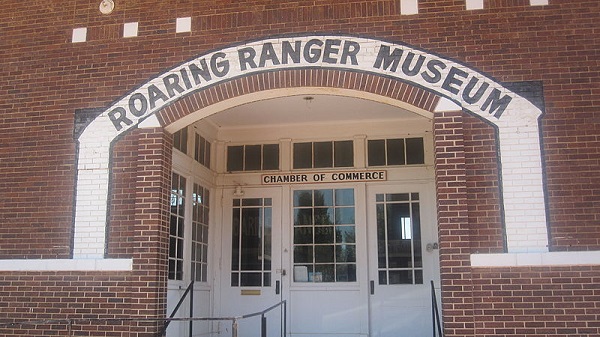
The “Roaring Ranger” discovery gained international fame for Ranger as the town whose oil wiped out critical oil shortages during World War I, allowing the Allies to “float to victory on a wave of oil.”
“Ranger’s population swelled almost overnight from less than 1,000 to more than 30,000. The boom ended in 1921 when the wells dried up, but the Ranger discovery well opened the door to oil fields in West Texas. The depot museum uses artifacts, historic photos and a vintage drilling rig to retell the fascinating saga.”
The museum, temporary closed in 2021, can be found on 121 S. Commerce Street. It usually is open Saturday 10 a.m. to 3 p.m. Call (254) 647-3091.
Ranger Historical Preservation Society (Facebook page)
In October 1917, a coal company completed a discovery well on the J. H. McCleskey farm, one mile southwest of Ranger. “This well came in as a gusher making 1,600 barrels high gravity oil daily and was the discovery well, which started the rush to Ranger and brought about the development of one of the greatest oil fields in the country.”
The Ranger Historical Preservation Society preserves this important petroleum history of Ranger, Eastland County. The mission includes “preserving historical sites and buildings, applying for and securing historical markers — and helping others in their research.”
Spindletop/Gladys City Boomtown Museum
Spindletop/Gladys City Boomtown Museum, operated by Lamar University in Beaumont, is a 15-building complex, which re-creates Gladys City, an early 1900s era boomtown on the historic Spindletop oilfield. Visitors can relive the boom days on a tour through the buildings representing actual businesses in operation during the boom.
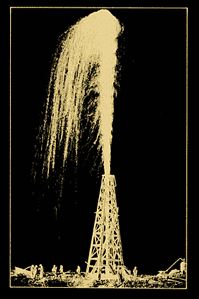
A boom town museum preserves the history of the 1901 “Lucas Gusher” and the Texas oilfield that changed the world.
In the years since its dedication in 1976, more than one-half million people have visited Gladys City. The museum provides services to the public, including school tours, adult group tours, teachers’ workshops, and historical information for researchers, journalists, and the general public. Visit this website to hear some period music as you take a virtual tour.
This museum in downtown Beaumont has educational programs designed for private school groups — including a 50 minute, interpreter-led tour.
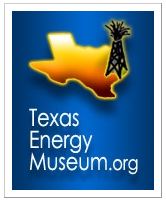
The Energy Museum collects photographs, maps, and other materials related to Beaumont and southeast Texas oilfields.
The museum is an excellent resource for field trips teaching social studies. While it offers programs for kindergarten through college level, the tour program is most effective for grades 2 to — and can be correlated to many science and social studies curriculum objectives and Texas Essential Knowledge and Skills requirements.
Texas State Historical Association
“Organized on March 2, 1897, the Texas State Historical Association is the oldest learned society in the state. Its mission is to foster the appreciation, understanding, and teaching of the rich and unique history of Texas and by example and through programs and activities encourage and promote research, preservation, and publication of historical material affecting the state of Texas.”
TSHA Online, is created and maintained by the association in partnership with the College of Liberal Arts and the General Libraries at the University of Texas at Austin. The extensive “Handbook of Texas Online” is a multidisciplinary encyclopedia of Texas history, geography, and culture sponsored by TSHA and the General Libraries at UT Austin.
Van Area Oil and Historical Museum (Facebook page)
The museum is located in an old warehouse originally built in 1930 by the Pure Oil Company to house oil field materials used in the development of the oil field.
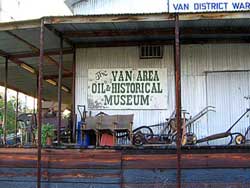
The Van Zandt County museum, east of Dallas, is in warehouse originally built in 1930 by the Pure Oil Company. Photo by Bruce Wells.
All of the oil derricks in the Van field have disappeared; however, the museum obtained a derrick and relocated it on the grounds as a reminder of bygone days. Displays include various types of oil related memorabilia as well as history on the area and city.
W. K. Gordon Center for Industrial History of Texas
Located in Mingus, between Ft. Worth and Abilene, the W. K. Gordon Center for Industrial History of Texas, is a research facility of Tarleton State University. It is a combined museum and special collections library. Located at the site of the Thurber ghost town, its interactive exhibits explore the birth and death of a company town.
The focus of the permanent exhibits is the development of the coal, brick, and petroleum industries in the Thurber area. A special collections library and research area permits examination of life in Thurber and in other areas of industrial development in Texas and the Southwest.
Read more and see these links to more U.S. petroleum museums.
_______________________
The American Oil & Gas Historical Society preserves U.S. petroleum history. Become an AOGHS annual supporter and help maintain this energy education website and expand historical research. For more information, contact bawells@aoghs.org. Copyright © 2025 Bruce A. Wells. All rights reserved.





